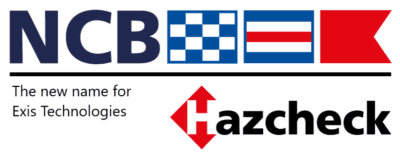New IT initiatives help change shape of compliance for HAZMAT sea shipments
Some 10% of containerized shipments include hazardous goods (hazmat), with the result that some ships will have in excess of a thousand hazmat containers on any given voyage. This necessitates critical checks to be made against the particular voyage legs (voyage segments between ports/ terminals) for all the hazmat being shipped.
These checks are complex:
- Most lines restrict or prohibit certain classes of DG (particularly explosives, radioactive materials and some organic peroxides in reefer containers) so the booking line needs to know if the partner line that will carry the box or boxes will accept the DG.
- Detailed stowage requirements (such as on deck only, away from accommodation, or away from sources of heat) mean that suitable space is finite.
- Many ports and individual container terminals have strict rules on the classes of DG that can be loaded, unloaded or transshipped, or even present on board while the ship is in port. Significant disruption can ensue if the ‘wrong’ hazmat is aboard a ship.
The lines carry out these checks to ensure the cargo is safe to carry to protect the crew, vessels, and the environment; safety of life and cargo and at sea.
Of course the checks above assume that the shipper has properly declared the cargo as Hazmat in the first place. In most cases shippers do try to do this but mistakes can be made due to lack of competence or unfortunately in some cases by wilful misdeclaration to save cost or time. In other cases the cargo may have been properly declared, but when it comes to packing and stowing the cargo in the container the correct procedures may not have been used.
Unless the container is physically opened and inspected by the shipping line or the authorities then it is impossible to know if the cargo is completely safe for transport.
The diagram below shows the current landscape with regard to shipment of hazmat by sea. Before the cargo is loaded on a ship, shipping lines will make extra checks to determine if any bookings could be undeclared hazmat. Hapag Lloyd for instance uses a tool called ‘Cargo Patrol’ to search bookings for possible issues.

If the cargo is declared as hazmat then shipping lines can use tools such as Hazcheck, from Exis Technologies to check if the declared cargo complies with the IMDG Code and other local rules and restrictions. Exis work with 9 of the top 10 container lines.
Exis is co-operating with two of the leading industry insurance organizations and has been working with container operators and ports / terminals to build a shared common database of local and operator restrictions. To date there has been no single source and the partners are promoting the new database with free access to data owners who upload data.
The final option before a Hazmat container is shipped is to physically inspect selected bookings/containers before they are loaded to check if cargo is declared correctly and packed/stowed.
On average over the last ten years, less than 60,000 containers have been inspected by the reporting Competent Authorities per year;……. deficiencies are found in about 15% of cases on average.’ (source TT Club (but only 4 countries reported))
Cargo surveyors who inspect containers prior to loading on behalf of container lines include for example;
- Port Supervisor who average 17% rejection 25,000 inspection in last 5 years, 12% serious enough to stop the shipment
- National Cargo Bureau, over 30,000 inspections in the last reported 12 months with 9% failure rate.
The majority of the above are inspections for declared hazmat. There are a variety of reasons for rejection; leaks, documentation, segregation, placarding/marking which is the most common problem followed by packing/stowage issues.
With 10 million plus hazmat containers shipped per annum (broad estimate), then at 9% failure rate it is easy to see the size of the issue.
The inspection process of course takes time and costs money so not every declared hazmat container is inspected and indeed not every container line has the same regime. Nevertheless the number of inspections is increasing and the need to have a database to record and analyze the findings so that the data can be used to address issues with the appropriate parties is clear.
Exis Technologies has been working with the two container cargo inspection companies, National Cargo Bureau, USA and Port Supervisor Rotterdam, to develop a new container cargo inspection system in line with customer requirements. Earlier this year Exis announced the launch of Hazcheck Inspections, a web-based database and access portal for inspection companies to plan and enter details of cargo inspections completed on behalf of container or vessel operators.
The solution allows the container or vessel operator to login with secure access and view or download inspection results and/or analytics. Consistent data is recorded and reported regardless of where and who records the inspection result. Non confidential analytics data can be shared with partners and third parties to help influence policy with respect to shipment of hazmat by sea.
Operators have the option to send cargo details to the inspection company so they can plan containers to select for inspection. Pre-entered planned data can be re-used when the inspections details are recorded.
The benefits include reporting inspections into a common database, consistent reporting and analysis of data.
Operators have the option to share non confidential data with partners and third parties e.g. CINS. www.cinsnet.com
Founded in 1952, National Cargo Bureau (NCB) is a non-profit organization headquartered in New York and operates nationally across the United States with the sole mission of Safety of Life and Cargo at Sea. NCB has been working closely with Exis Technologies to develop the Hazcheck Inspections specification including the user interface and the type of data that a hazmat container cargo inspection needs to focus on and collect.
Port Supervisor B.V. has started activities in 2011 as an independent company providing specialised services for the shipping, port logistics and insurance industries.
The core business includes risk services, hazardous cargo management and surveys involved in the handling, packing, storage, warehousing, transshipment and carriage of hazardous and general cargoes.
Port Supervisor gave important input to the Hazcheck Inspections specification relating to the preplanning of inspections prior to cargo loading on vessels and how the planning links to the recording of the actual inspections.
With two major companies on board the database has had a kick start but the next challenge is to encourage other similar companies to help build up a database of activity and hazmat declaration issues on a global basis.
US approach
There are nearly one million hazardous materials shipments daily in the United States and each one must comply with varying legal requirements including the IMDG Code and domestic 49 CFR regulations.
Exis Technologies has been working closely with their regional sales and service representative in the U.S., American Nautical Services, Inc (ANS) for over 18 years to deliver compliance solutions to a wide variety of U.S. customers involved in the hazmat shipping process.
Exis was looking for a professional maritime services organization that had an active cliental of its own; knowledge of existing hazmat regulations; and the ability to communicate the importance of implementing an effective, targeted compliance IT system to the US based companies shipping hazmat by sea. ANS was instrumental in helping Exis to develop the US hazmat regulations database and the functionality needed by industry to qualify hazmat shipments in and out of the United States.
ANS introduced US based companies, including Seaboard Marine, to Exis as clients requiring a full compliance solution including both international and domestic regulations. ANS assisted with client interface and technical support to both Seaboard and Exis during the development phase of the project. ANS and many other U.S. based customers now enjoy the benefit of a full range of Hazcheck software systems including the new Hazcheck Web Services tool as well as the more traditional Hazcheck Systems www.hazcheck.com.
ANS was established in 1977 and is composed of two divisions. It is both a marine survey and consultancy company and a retail/wholesale distribution hub for all major maritime publishers of marine regulatory; technical; professional; and trade publications as well as paper and digital nautical charts. ANS offers HM/DG training to industry consistent with the requirements of the HMR and IMDG Code.








